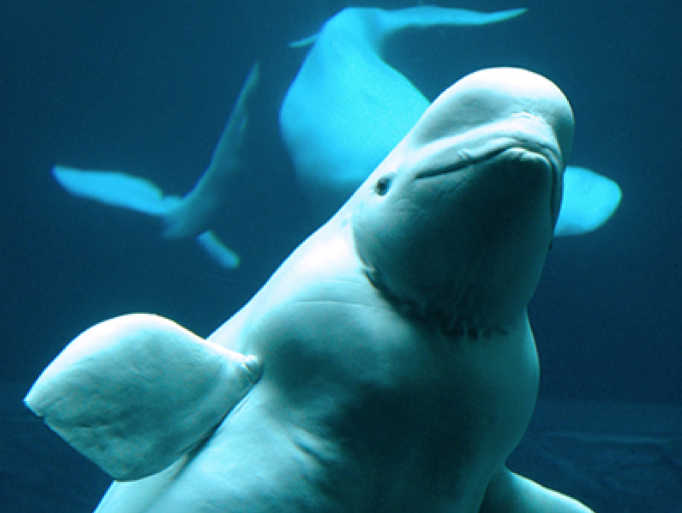With the annual lease sale approaching and the Alaska LNG Project proposed to enter Cook Inlet, some groups are asking what oil and gas development may do to beluga whale habitat in the inlet.
The Cook Inlet belugas, about 340 individuals as of 2014, migrate through upper Cook Inlet and cross through multiple oil and gas lease areas. Although conservation efforts are ongoing, the numbers decreased by about 1.6 percent annually between 1999 and 2012. A 2014 National Oceanic and Atmospheric Administration survey recorded a slight increase since then.
In its annual call for new information regarding Cook Inlet oil and gas development, the Alaska Department of Fish and Game submitted a comment saying that noise from additional shipping traffic and development may be interfering with beluga whale communication. The comment references an unpublished study conducted from 2008-2013 with information collected by the Cook Inlet Beluga Acoustics research program.
“… Beluga whale communications and hearing can be masked by anthropogenic noises, notably commercial ship traffic, unknown up or down sweeps, unidentified clanking and banging noises, and unidentified unclassed machinery,” the division wrote, according to the Division of Oil and Gas summary.
Fish and Game stated in the comment that noise from unidentified unclassed machinery had been detected in Trading Bay and could be related to oil and gas operations in that area. Research conducted by the National Oceanic and Atmospheric Administration has found that Trading Bay may be an important wintering area for the whales.
The Division of Oil and Gas answered that the information was new but not substantial enough to warrant a supplement to its Cook Inlet Best Interest Finding, the outline for how oil and gas leases are issued. While many have cited noise as a concern, the Best Interest Finding states there is not enough evidence to conclude that sound generated by human activity had any significant effect on the whales.
“(The belugas) continue to occupy upper Cook Inlet despite oil and gas development, vessel and aircraft traffic, and dredging operations, and based on a review of available information … belugas appear to have become habituated to offshore oil and gas activities in central Cook Inlet,” the Best Interest Finding states.
The Division of Oil and Gas issued a Decision of No Substantial New Information on Friday.
Other groups raised the beluga question in comments to the Federal Energy Regulatory Commission about the Alaska LNG Project. The Center for Biological Diversity, a Tucson, Arizona-based conservation organization, submitted a comment saying that increased noise exposure can stress whales, causing long-term health problems and potentially affecting fertility, growth rates and mortality.
“This is a significant concern given the highly imperiled status of endangered Cook Inlet beluga whales, and that the Alaska LNG tankers will be traveling directly through their critical habitat,” wrote Center for Biological Diversity attorney Kristen Monsell.
The Center for Biological Diversity and the Environmental Protection Agency Region 10, which includes Alaska, asked that the Environmental Impact Statement for the Alaska LNG Project consider Cook Inlet beluga whale habitat when weighing the impact of the facility, pipeline and associated activity.
Fish and Game also cited concerns about noise for Pacific walruses that have been observed to haul out at Cape Seniavin on the Alaska Peninsula, also included in the Decision of No Substantial New Information. The department requested in a comment that the Division of Oil and Gas set up a mitigation measure to protect the walruses from extensive disturbance, but the decision states that a mitigation measure is already in place and does not merit a supplement.
• Elizabeth Earl is a reporter for the Peninsula Clarion. She can be reached at elizabeth.earl@peninsulaclarion.com.

